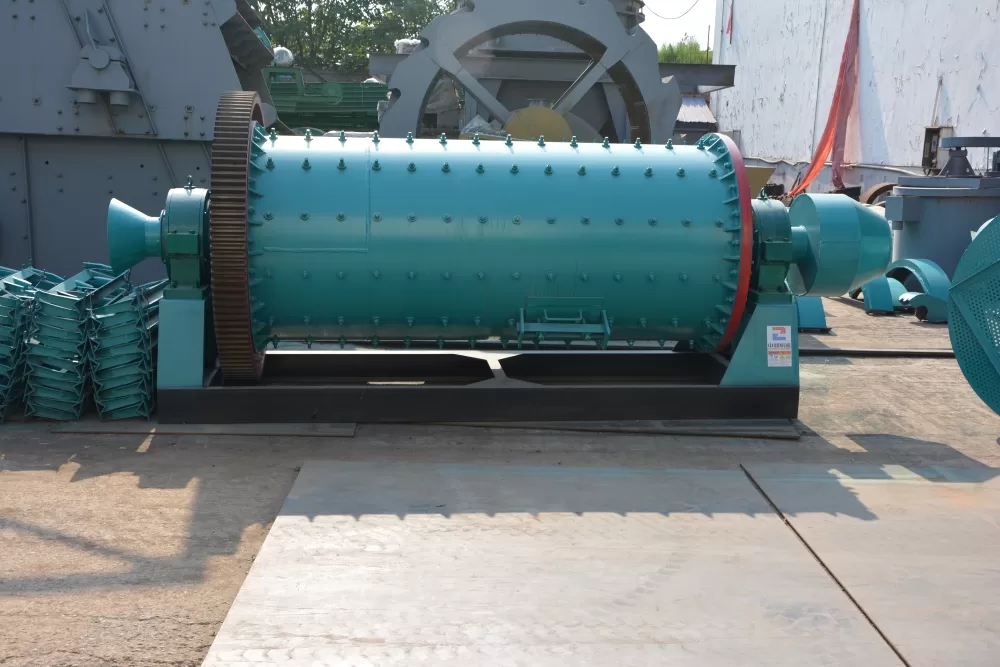Ball Mill
115768Our ball mill are available in different styles and many models in each style to adapt to various grinding requirements.
View detailsSearch the whole station Crushing Equipment
Dry Autogenous Mill:
The structure of a dry autogenous mill consists of the feeding funnel, cylinder, discharge funnel, and drive device. The grinding product discharge and classification in a dry autogenous mill are achieved with the help of air or wind. The mill itself and the wind system are the two main components of this equipment. The air movement in the wind system determines whether it is a closed-circuit or open-circuit dry self-grinding system. In the closed-circuit system, a purification device is used to extract dust-containing gas from the system for purification before being discharged into the atmosphere. The open-circuit system releases the purified air into the atmosphere. The advantages of a dry autogenous mill include the ability to handle larger material blocks, fast product discharge, higher productivity, coarse and uniform product size, and reduced over-crushing. However, it requires a complex air circuit system, experiences significant pipeline wear and tear, and has relatively high energy consumption, especially when the material has a moisture content above 4%, which requires pre-drying. Therefore, the dry autogenous grinding process is typically used in areas with limited water availability.

Wet Autogenous Mill:
The structure of a wet autogenous mill is similar to that of a dry autogenous mill, consisting of a cylinder, end cover, lining plate, discharge part, feeding part, bearing part, transmission part, and lubrication system. The key difference is that the end cover of a wet autogenous mill is conical, and it has an additional discharge lattice plate at the discharge end. The discharge hollow journal of the wet autogenous mill is equipped with a cylindrical screen, a sand return pipe with a spiral blade, and a sand return spoon. The slurry discharged from the wet autogenous mill is processed through the cylindrical sieve screen, and the coarse particles are returned to the mill for regrinding using the sand return pipe and spiral blade. The fine particles are discharged through the hollow shaft neck as the final product. In dealing with stubborn stones that accumulate in the wet autogenous mill and hinder the grinding process, measures such as increasing the proportion of large materials in the feed, adding large steel balls to assist in crushing the stubborn stones, and removing the stubborn stones from the mill are commonly employed.
Advantages and Disadvantages of Wet Autogenous Mill:
The advantages of a wet autogenous mill compared to a dry autogenous mill include lower investment cost (5%-10% lower), lower energy consumption (25%-30% lower), the ability to handle larger material tonnage, the ability to handle materials containing water and mud, and improved industrial hygiene conditions due to less dust production. However, the disadvantages of a wet autogenous mill include more severe wear and tear on the mill liner, lower productivity compared to the dry autogenous mill due to smaller material handling capacity, and increased wear on the largest material blocks due to the leaching effect of the slurry.
Our ball mill are available in different styles and many models in each style to adapt to various grinding requirements.
View detailsWet Pan Mill for saleApplicationsWet Pan Mill AdvantagesProduct StructureWet Pan Mill Working PrincipleParameters of Wet Pan MillRelated Products Gold Mine Wet Pan Mill is a highly efficient, energy-saving and easy-to-ope...
View detailsThe phosphate ball mill is a specialized ball mill designed for grinding phosphorus ore based on its physical and chemical properties. It has a very good grinding effect on phosphorus ore, which is beneficial for the comprehensive utilization of ...
View detailsWhen it comes to grinding limestone, both ball mills and rod mills can be suitable options. However, there are differences between the two in terms of working principle, grinding form, and application areas. Here's a comparison to help you choose...
View detailsWe use cookies to ensure that we give you the best experience on our website. If you continue to use this site we will assume that you are happy with it.
Privacy Policy